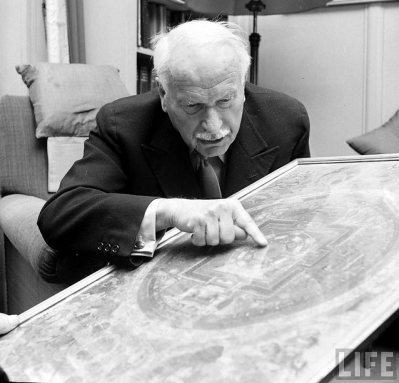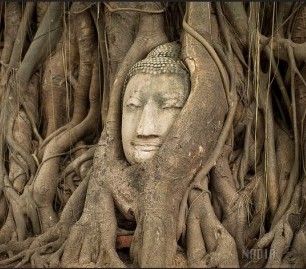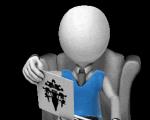Analytical psychology. Analytical psychology. Psychotherapy. Tutorial.
Analytical psychology is one of the psychodynamic directions, the founder of which is the Swiss psychologist and culturologist C. G. Jung. This direction is related to psychoanalysis, but has significant differences. Its essence lies in understanding and integrating the deep forces and motivations behind human behavior through the study of the phenomenology of dreams, folklore and mythology. Analytical psychology relies on the idea of the existence of the unconscious sphere of the personality, which is the source of healing forces and the development of individuality. This doctrine is based on the concept of the collective unconscious, which reflects the data of anthropology, ethnography, the history of culture and religion, analyzed by Jung in the aspect of biological evolution and cultural and historical development, and which manifests itself in the psyche of the individual. In contrast to the natural-scientific approach of experimental psychology, analytical psychology does not consider an abstract isolated individual, but the individual psyche as mediated by cultural forms and closely connected with the collective psyche.
General provisions
As a unit of analysis of the psyche, Jung proposed the concept of an archetype as a suprapersonal innate model of perception, thinking and experience at various levels of the human psyche: animal, universal, generic, family and individual. The energy of the archetype is due to the fact that it is the realization of libido - the universal psychic energy, which - unlike Freud's concept of libido - does not have its own specific coloring (for example, sexual), but can have different manifestations in different areas of a person's life. In the process of personal study of one's own psyche - analysis, a person meets his unconscious through the understanding of symbols that can be found in all areas of life: in dreams, art, religion, relationships with other people. The symbolic language of the unconscious should be studied and understood using the data of mythology, ethnology, and religious studies. Attention and openness to these processes harmonizes human life.
Jung also gave a description of extraverted (aimed primarily at the external world) and introverted (aimed at the inner, subjective world) attitudes and four functions, according to the role of which personality types are distinguished in the individual psyche.
Neurosis, from the point of view of analytical psychology, is the result of a disharmonious relationship between individual consciousness and archetypal contents. The goal of psychotherapy is to help the individual establish (or re-establish) a healthy connection with the unconscious. This means that consciousness should neither be absorbed by unconscious contents (which is defined as a state of psychosis), nor isolated from them. The meeting of consciousness with the symbolic messages of the unconscious enriches life and promotes psychological development. Jung considered the process of psychological growth and maturation (which he called individuation) to be a key process in the life of each individual and society as a whole.
To move along the path of individuation, a person must allow an encounter with something in his personality that is beyond the ego. This is facilitated by work with dreams, acquaintance with religions and various spiritual practices, and a critical attitude to social patterns (and not blind non-reflexive adherence to customary norms, beliefs, stereotypes).
The derivatives of analytical psychology are:
Archetypal psychology
Jungian symbol drama (catatim-imaginative therapy)
Jungian art therapy
Jungian psychodrama
Process Oriented Therapy
sand therapy
Neo-Ericksonian hypnosis
Jungian typology
Socionics
Basic concepts
Unconscious
Analytical psychology is based on the assumption of the existence of the individual unconscious as a powerful component of the human soul. Steady contact between consciousness and the unconscious in the individual psyche is necessary for its integrity.
Another key assumption is that dreams exhibit thoughts, beliefs, and feelings that otherwise remain unconscious to the individual but tend to do so, and that this material is expressed in how the individual describes visual images. Remaining unconscious, this material is contained in the unconscious, and dreams are one of the main means of expressing this material.
Analytical psychology distinguishes between the individual (personal) and the collective unconscious
The collective unconscious contains archetypes common to all people. This means that in the process of individuation, symbols may emerge that are not directly related to the direct experience of a particular person. These contents are rather answers to the deeper questions of humanity: life, death, meaning, happiness, fear. These and other concepts can be actualized and integrated by a person.
collective unconscious
Jung's concept of the collective unconscious is often misunderstood. To understand this concept, it is important to understand the meaning of archetypes.
The archetypes of the collective unconscious can be thought of as the DNA of the human soul. All human beings share a common physical heredity and a predisposition to roughly certain physical forms(for example, to have two hands, one heart), and in the same way we all have innate psychological predispositions in the form of archetypes, which form the collective unconscious.
In contrast to the objective world, the subjective reality of archetypes cannot be fully measured by quantitative research methods. It can only be discovered through the study of the symbolic communication of the human soul - in art, dreams, religion, myth and in the drawing of human relations and behavior. Jung devoted his life to the task of discovering and understanding the collective unconscious, he assumed that certain symbolic themes exist in all cultures, all eras and in every single person.
Archetypes
Jung introduced the concept of the psychological archetype in 1919 in Instinct and the Unconscious. In his understanding, archetypes are innate universal prototypes of ideas, and they can be used to interpret the results of research. A group of memories and connections around an archetype is called a complex. For example, the mother complex is associated with the mother archetype. Jung considered archetypes as psychological organs, by analogy with the organs of the body, since both have morphological inclinations that manifest themselves in the course of development.
Self-realization and neuroticism
The innate need for self-realization pushes people to discover and integrate discarded material. This natural process is called individuation, that is, the process of becoming an individual.
According to Jung, self-realization can take place in two stages. In the first half of life, a person separates from the community, tries to create his own identity (I). Therefore, there is a lot of destructiveness in young people, and the relationship of a teenager to parents is often full of hostility. Jung also said that we go through a "second puberty" around the age of 35-40, when we shift the focus from material values, sexuality, procreation to the values of community and spirituality.
In the second half of life, a person reunites with the human race, becomes part of it again. At this time, an adult becomes more willing to share something with others (voluntarily devote his time to common causes, engage in construction, gardening, art) than to destroy. During this period, he pays more attention to his feelings - conscious and unconscious. As Jung observed, a young person could rarely say "I'm angry" or "I'm sad" as this would imply joining the general human experience, which he usually comes to more mature, wise years. For youth, the theme of searching for one's true essence is characteristic, and for holistic personality leading is the idea of contributing to the shared experience.
Jung suggested that the ultimate goal of the collective unconscious and self-realization is the achievement of the highest, that is, spiritual level experience.
If a person does not progress along the path of self-knowledge, neurotic symptoms arise, including such well-known ones as phobia, fetishism or depression.
Shadow
The shadow is an unconscious complex, which refers to the repressed, repressed or alienated properties of the conscious part of the personality. In analytical psychology, it is customary to single out both creative and destructive aspects of the Human Shadow.
In the destructive aspect, the Shadow represents that which a person does not accept in himself. For example, a person who considers himself to be kind has the shadow qualities of rudeness or malice. And vice versa, for a person who is tough by nature, tenderness and sensitivity remain in the Shadow.
In a constructive aspect, the Shadow represents positive, useful qualities. They are spoken of as the "gold of the Shadow".
Jung emphasized how important it is to understand shadow contents and include them in consciousness in order to avoid a situation where a person projects shadow qualities onto others (appropriates them).
In dreams, the Shadow is often represented as a dark figure of the same gender as the dreamer himself.
According to Jung, a person deals with the Shadow in four ways: denial, projection, integration and/or transformation.
Analytical psychology is a direction of psychodynamic psychotherapy developed by K.G. Jung.
Carl Jung developed a complex and interesting theory of psychology that covers an unusually wide range of human thought and behavior. Jung's analysis of human nature includes studies of Eastern religions, alchemy, parapsychology and mythology. One of Jung's central concepts is individuation; he calls so the process of human development, including the establishment of links between the Ego - the center of consciousness, and the self - the center of the soul as a whole, embracing the conscious and the unconscious.
The concept of introversion and extraversion. Jung believed that each individual, the circle of his interests, can be turned to his inner self or, conversely, to the outside world. He called the first type of people introverts, the second - extroverts. No one is a pure extrovert or introvert. However, each individual is more inclined towards any one orientation and operates predominantly within its framework. At times, introversion is more appropriate, at other times it is the other way around. It is impossible to hold both orientations at the same time.
Introverts are primarily interested in their own thoughts and feelings. The danger for them is not to lose touch with the outside world by plunging too deeply into their inner world.
Extroverts are busy with the outer world of people and things; they tend to be more social, more aware of what is happening around them. The danger for them lies in the loss of the ability to analyze their internal mental processes.
Mental functions. Jung identifies four main mental functions: thinking, feeling, sensation and intuition. Each function can be performed in an extraverted or introverted way.
Thinking is occupied with truth, its judgments are based on impersonal, logical and objective criteria. Thinking types are great planners, but often get caught up in them, even if those plans are in conflict with a particular situation.
Feeling - making decisions in accordance with value judgments, for example, bad-good, right-wrong. Feeling types are oriented towards the emotional aspects of experience. They prefer strong, intense emotions to neutral experiences.
Jung calls sensation and intuition ways of obtaining information, as opposed to ways of making a decision.
Feeling is based on direct experience, perception of details, specific facts - on everything that can be touched, seen, heard, etc. Sensing types tend to respond to the immediate situation and deal effectively with all sorts of difficulties and surprises.
Intuition is a way of processing information in terms of past experience, future goals and unconscious processes. An intuitive person processes information very quickly, trusts own experience his actions often seem inconsistent.
The combination of the four functions in the individual constitutes a holistic and balanced approach to the world. Jung writes: “In order to navigate, we must have a function that confirms that something is there (feeling); a second function establishes what exactly is there (thinking); a third decides whether it is appropriate or not, whether we want to accept it (feeling); the fourth indicates where it came from and where it leads (intuition)."
In humans, these functions are unevenly developed, one necessarily dominates, the other, relatively developed, is additional. The remaining two functions are unconscious and operate with much less efficiency.
Collective unconscious. Jung writes that we are born with not only a biological, but also a psychological inheritance. In addition to the personal unconscious, there is also a collective unconscious, which contains the experience of the development of all mankind and is transmitted from generation to generation.
Archetypes. Archetypes form the basis of the collective unconscious. These are forms without content of their own, which organize and direct psychological material. They can be compared to a dry river bed, the shape of which will determine the characteristics of the river when water flows through it.
Archetypes manifest themselves in the form of symbols: in the images of heroes, myths, folklore, rituals, traditions, etc. There are many archetypes, since this is a generalized experience of our ancestors. The main ones are: the archetype I, the archetype of the mother, the archetype of the father.
The archetype of the mother determines not only the real image of the mother, but also collective image women, real or mythical (Mother, Virgin Mary, Baba Yaga, etc.). The archetype of the father determines general attitude to men (Father, Ilya Muromets, God, Law, Despot, etc.).
Each of the basic personality structures is also an archetype; among them are the Ego, the persona, the shadow, the Anima (for men), the Animus (for women), the self.
Symbols. According to Jung, the unconscious expresses itself primarily in symbols. Although no single symbol can represent an archetype, the more closely the symbol corresponds to the unconscious material organized around the archetype, the more strongly it elicits a response. Symbolic terms and images often represent ideas that we cannot clearly define or fully understand. The symbol represents the mental situation of the individual.
Dreams. Dreams are an important connecting link between conscious and unconscious processes. According to Jung, "the main function of dreams is to try to restore our mental balance by creating dream material, which thus re-establishes the general mental balance."
Since a dream contains symbols that have more than one meaning, there can be no simple mechanical system for interpreting dreams. Any analysis of a dream must take into account the position, experience, and environment of the dreamer. The analyst's interpretations can only be provisional until they are accepted by the analysand and felt meaningful by him. More important is the fact of not just understanding the dream, but the act of experiencing the material itself and taking it seriously.
The structure of personality. Jung distinguishes the following elements of the personality structure: Ego, persona, shadow, Anima (for men), Animus (for women), self.
The ego is the center of consciousness and one of the main archetypes of personality. The ego creates a sense of coherence and direction in our conscious life. It, being on the verge of the unconscious, is responsible for the connection between the conscious and the unconscious. If the harmony of this connection is violated, neurosis occurs.
Person (personality) is how we present ourselves to the world. This is the character we take on; through persona we relate to others. It includes our social roles, the kind of clothes we choose to wear, our individual style expressions.
Distinguish between positive and negative qualities persons. In the first case, it emphasizes individuality, promotes communication, and serves as protection against harmful environmental influences. Otherwise, if social role betrayed too great importance The persona can stifle individuality.
The shadow is the center of the personal, the unconscious, which includes tendencies, desires, memories and experiences denied by the individual as incompatible with his person or contrary to social standards and ideals. The shadow is most dangerous if it is not recognized. Then the individual projects all undesirable qualities onto others, or is at the mercy of the shadow, without being aware of it. The more the material of the shadow is realized, the less it can dominate.
The shadow is not only the reverse image of the ego, but also the repository vital energy, instincts, source of creativity. The shadow is rooted in the collective unconscious and can provide the individual with access to significant unconscious material that is rejected by the ego and persona.
Anima and Animus - according to Jung, these are ideas about oneself as a man and a woman, repressed into the unconscious as undesirable for a given individual. Thus, since a woman defines herself feministically, her animus encompasses all the disparate tendencies and experiences that she considers masculine. According to Jung, every man in the depths of his soul, in his unconscious, is a woman. "Because this image is unconscious, it is always unconsciously projected onto the beloved woman, it is one of the main bases of attraction and repulsion."
Anima and Animus are the most ancient archetypes. They are oriented with their point to the deep unconscious and have a great influence on the behavior of the individual.
Self. Jung called the self the central archetype, the archetype of the order and integrity of the personality. According to Jung, "consciousness and the unconscious do not necessarily oppose each other, they complement each other to the integrity that is the self." The Self is an inner guiding factor quite distinct from, even separate from, the Ego and consciousness.
Individualization and analytical psychotherapy. Jung called individuation a person's ability to self-knowledge and self-development, the merging of his conscious and unconscious. "Individuation," says Jung, "means becoming one, homogeneous being, and since 'individuality' is our innermost, permanent, incomparable uniqueness, individuation also implies becoming oneself."
The first stage of individuation is the analysis of the person. Although the person has important protective functions, it is also a mask that hides the self and the unconscious.
The second stage is awareness of the shadow. If we recognize its reality, we can free ourselves from its influence.
The third stage is the meeting with the Anima or Animus. This archetype should be treated as a real person, a being to communicate with and learn from. Jung "questioned" his anima about the interpretation of dreams, how the analysand consults the analysor.
The last stage of the individuation process is the development of the self. The self becomes the new center of the soul. It brings unity and integrates conscious and unconscious material. It continues to be the center of consciousness, but no longer seems to be the core of the whole personality. Jung writes that "man must be himself, must find his own individuality, that center of personality, which is equally removed from consciousness and the unconscious; we must strive for this ideal center to which nature directs us."
All these stages intersect, a person constantly returns to old problems again. Individuation can be thought of as a spiral in which the individual continues to face the same fundamental questions, each time in a more subtle form.
The main task of the psychotherapist, according to Jung, is to establish contacts between the conscious personality and his personal and collective unconscious. Jung believed that psychotherapy is primarily the interaction of the unconscious analyst with the unconscious of the patient.
Jung divided the whole process of treatment into two stages: recognition and interpretation. Treatment begins with the collection of material. Already in the process of recognition, there is a partial awareness of one's unconscious. The next step is interpretation. collected material. Especially importance Jung gave dreams and symbols, and also used other forms of expression of the unconscious: drawings, dances, sculpture.
Carl Jung created his own direction in psychology and psychotherapy. Analytical psychotherapy is mainly aimed at balancing the conscious and the unconscious, at optimizing the dynamic interaction between them.
Analytical psychology (English analytic psychology)- one of the directions of neo-Freudianism, founded by the Swiss psychologist and culturologist K.G. Jung. At the center of A. p. is the doctrine of the unconscious, to which Jung assigns leading place in explaining the causes of the emergence of features of the psyche and human behavior. Convinced that the ideas of Z. Freud, developed on the material of patients with hysteria, are not applicable to schizophrenics, Jung put forward a different concept than Freud, the concept of the unconscious. In addition to the individual unconscious, Jung also identifies the collective unconscious. Interpreting from the psychological point of view. data of physical and cultural anthropology (ethnography), the history of culture and religion, Jung interprets the collective unconscious as a “residue” in the human psyche of experience gained in the course of biological evolution and cultural and historical development.
As a unit of analysis of the collective unconscious, Jung puts forward the concept of an archetype - an innate attitude towards selective perception, experience, and, possibly, some form of behavior in relation to certain stimuli. An archetype is defined as a “pure form potency” that does not have its own content, but allows structuring the various contents of the psyche. Postulating the existence of different archetypes, Jung identifies in the human psyche layers of animal, universal, tribal, family and individual origin. In the structuring influence of the archetype on behavior, Jung sees the manifestation of libido, which he understands as a dynamic-energetic aspect of the psyche. Not in the creative social activity of a person, but in the depths of the individual psyche, Jung sees driving forces development of the subject. libido, through the spontaneous formation of general attitudes, directs the development of the individual along the path of "individuation", i.e. full revelation of the unique individuality of a person, his full self-fulfillment.
In addition to general attitudes (unconscious focus on a specific goal, readiness for some action and perception), Jung introduces the concepts of extraverted (aimed at the outside world) and introverted (aimed at the inner, subjective world) attitudes of consciousness (ego). These installations characterize 2 against. psychological type personalities - extroverts and introverts. Jung's typology is further development in the factor theory of personality, developed by the English. psychologist G. Eysenck. The indicators determined using the Eysenck questionnaires on the extraversion-introversion scale significantly correlate with certain temperamental properties and personality traits.
Adding ed.: Among the fruitful ideas put forward by Jung and developed in psychoanalysis was the idea of mental complexes that make up the content of the personal unconscious.
Psychological dictionary. A.V. Petrovsky M.G. Yaroshevsky
Analytical psychology- the system of views of the Swiss psychologist K.G. Jung, who gave her this name in order to distinguish her from a related direction - the psychoanalysis of Z. Freud. Attaching, like Freud, the unconscious in regulating behavior, Jung singled out the collective form along with its individual (personal) form, which can never become the content of consciousness. The collective unconscious forms an autonomous psychic fund, in which the experience of previous generations is transmitted by inheritance (through the structure of the brain). Included in this fund primary education- archetypes (universal prototypes) underlie the symbolism of creativity, various rituals, dreams and complexes. As a method for analyzing ulterior motives, Jung proposed a word association test (see Association experiment): an inadequate response (or reaction delay) to a stimulus word indicates the presence of a complex.
aim mental development A. p. considers individuation as a special integration of the contents of the collective unconscious, thanks to which the personality realizes itself as a unique indivisible whole. Although A. p. rejected a number of postulates of Freudianism (in particular, libido was understood not as sexual, but as any unconscious mental energy), however, the same features are inherent in the methodological orientations of this direction as in other branches of psychoanalysis, since the socio-historical essence of incentives is denied. forces of human behavior and the predominant role of consciousness in its regulation.
The typology of characters proposed by Jung, according to which there are two main categories of people - extroverts (aimed at the outside world) and introverts (aimed at the inner world), was developed independently of A. p. in specific psychological research personalities (cf. Extraversion - introversion).
Great Encyclopedia of Psychiatry. Zhmurov V.A.
Analytical psychology
- variant of psychoanalysis by K. Jung;
- any branch of psychology that uses as basic methods analysis of mental manifestations.
Neurology. Full Dictionary. Nikiforov A.S.
there is no meaning and interpretation of the word
Oxford Dictionary of Psychology
Analytical psychology
- A form of psychoanalysis developed by Carl Gustav Jung.
- Sometimes this name is used for any approach in psychology in which special meaning is given to the decomposition of phenomena into their component parts.
subject area of the term
"My life and my scientific work constitute a single whole. In a sense, it was my life that was the embodiment of my works. What I am and what I write are one. All my ideas and all my efforts are me."
C.G. Jung
Analytical psychology is a branch of depth psychology founded by the outstanding Swiss psychologist, psychiatrist and thinker of the 20th century, Carl Gustav Jung. At the beginning of his journey, Jung was greatly influenced by Sigmund Freud. Their friendly relations and correspondence gave impetus to the development of psychoanalysis. Gradually, by 1913, there were significant disagreements that led to a break, and in the future, each developed in its own direction. Despite the differences in views that were significant at that time, Jung always treated Freud with great respect, emphasizing the undoubted importance of the discoveries made by the founder of psychoanalysis. Z. Freud managed to find a clear connection between clinical manifestations mental disorders and contradictions, conflicts between unconscious drives and human consciousness. The unconscious has revealed its autonomous, impersonal nature. As it turned out, it contains not only what was once the content of consciousness, but something deeper and more fundamental.
Summarizing the conversation about the similarities between analytical psychology and psychoanalysis, we emphasize that both schools most closely study the unconscious, that is, the totality of potentially inexhaustible mental processes for which there is no subjective control and full, clear awareness. Both schools also give great attention psychodynamics of internal processes in the psyche, that is, the complex interaction between instincts, motives and drives that compete or fight with each other for supremacy in the regulation of human behavior.
However, Jung, in addition to the personal unconscious, introduced the concept "collective unconscious" and revised Freud's ideas about psychic energy libido and its predominantly sexual nature. Studying culture, religion, mythology, clinical material of patients, Jung came to the conclusion that there is not only the unconscious of the subject, but also the family, tribal, national, racial and collective, universal unconscious, rooted in the world of ancestors and animals.
According to Jung's theory, the collective unconscious is structured , i.e. subject to local programs/matrices – archetypes which, in turn, are subordinate to the main system-forming archetype - the Self, which is the core of the possibilities inherent in a person, which will be revealed during his life. Archetypes are innate neuropsychic structures that manifest themselves in the general motives of a person's behavior and his relationship with the world. Archetypes arose in the process of millennia of evolution, which determined their basic, universal, transpersonal character.
To study the ancient layers of the archetype, analytical psychology is interested in the animal world, the achievements of ethology (the science of animal behavior). To study the middle and upper layers of the archetype, analytical psychology is interested in the symbolic life of man - mythology, religion, politics, history, folklore, literature, painting and music, that which constitutes human culture. The interpretation of symbols in a broad historical and cultural context is one of distinctive features analytical psychology.
The personal life of a person, his attempts to reveal his potential, achieve integrity, all successes and failures along this path are the subject of the analysis itself, long-term interaction analysand and analytical psycholoa. Jungian analysis focuses on memories, fantasies, dreams, past experience and relations between the analyst and the analysand, as well as the personal philosophy of a person, his life aspirations, meanings and creativity. The aim of this painstaking work is individuation process - this is one of the central and multidimensional concepts introduced by Jung, the study of which he devoted his whole life.
Note here that in Jungian analysis, along with search for reasons symptoms and life problems of the patient, widely used teleological an approach, suggesting an answer to the question - for what, for what purpose does this or that mental phenomenon arise - a symptom, a state, an event in a person's life? ..
Further development of analytical psychology led to the allocation three schools, closely related to each other and originating from common theoretical sources:
classical school continues the traditions laid down by K.G. Jung. archetypal school, founded in the 70s by D. Hillman, focuses on working with archetypal images. School development, which arose in the 1950s, integrated the classical approach of Jung and one of the trends in psychoanalysis - the theory of object relations. Here much attention is paid to early childhood experience and the relationship between analyst and patient. The founder of this trend is M. Fordham, who fruitfully collaborated with the British school of psychoanalysis.
Jung's ideas had a significant impact on philosophy, science, culture and art of the 20th century. They remain in demand and relevant today. Jung's creative heritage is a twenty-volume collected works of his works, which go far beyond the scope of psychology and psychiatry, and are devoted to Eastern and European philosophy, mythology, and religion. In 1948, the Institute was established in Zurich as an educational and research institution dedicated to analytical psychology, which continues its work to this day. Jung participated in the teaching and research activities of the institute until his death in 1961 as director. Today, certified analytical psychologists from all over the world are united in a professional organization — International Association for Analytical Psychology.
Training of a certified specialist - an analytical psychologist - takes years, requires, like any rare specialty, large mental and material investments, the main of which is educational analysis. Subsequently, at the beginning own practice, the student is required to attend supervision – discuss their work individually and in a group of other students. This best school teaching methodology of analysis, ethics, formation analytical position, maintaining boundaries, continuing their own professional and personal growth.
Thanks to a synthetic, flexible and open approach, breadth and deep inner culture, Jung managed to create a theory that gave impetus to the development of other directions in psychotherapy. These are art therapy, symbol drama, Jungian psychodrama, Mindell's process therapy, sand therapy, mandala therapy, play-back theater, etc. Therefore, representatives of these areas have the opportunity to learn a lot of useful things for their own development and professional growth, plunging into Jung's analytical psychology, being in the process of exchanging opinions and experiences with colleagues from other schools.



Analytical psychology
Vadim Rudnev
Analytical psychology is an offshoot of psychoanalysis developed by the Swiss psychologist and philosopher Carl Gustav Jung.
At first, Jung was a student, collaborator and friend of Freud, but already from the 10s they sharply diverged on a number of fundamental issues. Jung was critical of the fact that Freud attributed the cause of all neuroses and other mental illness to sexual problems. Jung considered it unacceptable to interpret all the phenomena of the unconscious in terms of repressed sexuality. The Jungian interpretation of libido is much broader. In his opinion, neurosis and other mental illnesses manifest themselves as a reversal of libido, which leads to the reproduction in the mind of the patient of archaic images and experiences, which are considered as "the primary forms of human adaptation to the world around us."
Freud and Jung were people of different generations and cultures. Paradoxically, Freud, in his emotional and rational attitudes, was a man of positive values in the nineteenth century. Jung was a man of the twentieth century, devoid of positivist prejudices. He was engaged in alchemy and astrology, divined according to the Book of Changes, and made a significant contribution to the study of myth.
This sharp difference between the personalities of Freud and Jung affected their understanding of the nature of the unconscious. The main point of demarcation between Freudian psychoanalysis and Jungian analytical psychology is the fact that, from the point of view of the latter, the unconscious has a collective character. Jung wrote: "These contents have one amazing ability - their mythological character. They seem to belong to the structure of the soul, which is characteristic not of any individual, but of humanity in general. When I first encountered such contents, I wondered if they could to be hereditary, and suggested that they could be explained by racial heredity.In order to understand all this, I went to the United States, where, studying the dreams of purebred Negroes, I had the opportunity to convince myself that these images had nothing to do with the so-called racial or blood inheritance, nor are they products personal experience individual. They belong to humanity as a whole, therefore they have a collective nature.
To use the expression of St. Augustine, I have called these collective proforms archetypes. "Archetype" means type (imprint), a certain formation of an archaic character, containing, both in form and in meaning, mythological motifs. IN pure form the latter are present in fairy tales, myths, legends, folklore".
These carriers of the collective unconscious were understood by Jung in different periods in different ways: sometimes as something like a correlate of instincts, "sometimes as a result of spontaneous generation of images by neurodynamic structures of the brain that are invariant for all times and peoples."
In any case, Jung believed that the archetype could not be explained and thus exhausted. When an image of the sun appears in fantasy, or a lion, which is identified with it, or a king, or a dragon guarding a treasure, then, according to Jung, it is neither one nor the other, but some third, which is very approximately expressed by these comparisons. The only thing available to psychology is the description, interpretation and typology of archetypes, to which a huge part of Jung's legacy is devoted. Its interpretations are often arbitrary. Understanding this, Jung was inclined to emphasize the closeness of the methods of analytical psychology to the methods of art, and sometimes directly stated that he had discovered a new type of scientific rationality.
Analyzing the forms of interaction between archetypes and consciousness, Jung singled out two extremes, which, from his point of view, are equally dangerous for the individual and social existence of a person. He saw the first extreme in Eastern religious and mystical cults, where the personal principle dissolves into the collective unconscious. The other extreme is Western individualistic rational thinking, where, on the contrary, the collective unconscious is repressed. In contrast to these extremes, Jung developed the doctrine of individuality as the integration of the conscious and unconscious principles of the individual's psyche through the symbolic interpretation and subjective living of their archetypal structures. He saw the value of analytical psychology in giving individual consciousness adequate interpretations of archetypal symbolism to facilitate the processes of individuation, that is, the mental development of an individual through assimilation by consciousness of the contents of the personal and collective unconscious. The ultimate goal of individual development is to achieve personal integrity and uniqueness.
Jung's concept had a decisive influence on the formation of transpersonal psychology.
Bibliography
Jung K.G. Archetype and symbol. - M., 1991.
Jung K.G. Tavistock Lectures. Analytical psychology: its theory and practice. - Kyiv, 1995.
Jung KG Soul and myth: Six archetypes. - Kyiv, 1996.
Ivanov A V. Jung // Modern Western Philosophy: Dictionary. - M., 1991.
Meletinsky E.M. Poetics of myth. - M., 1976.



